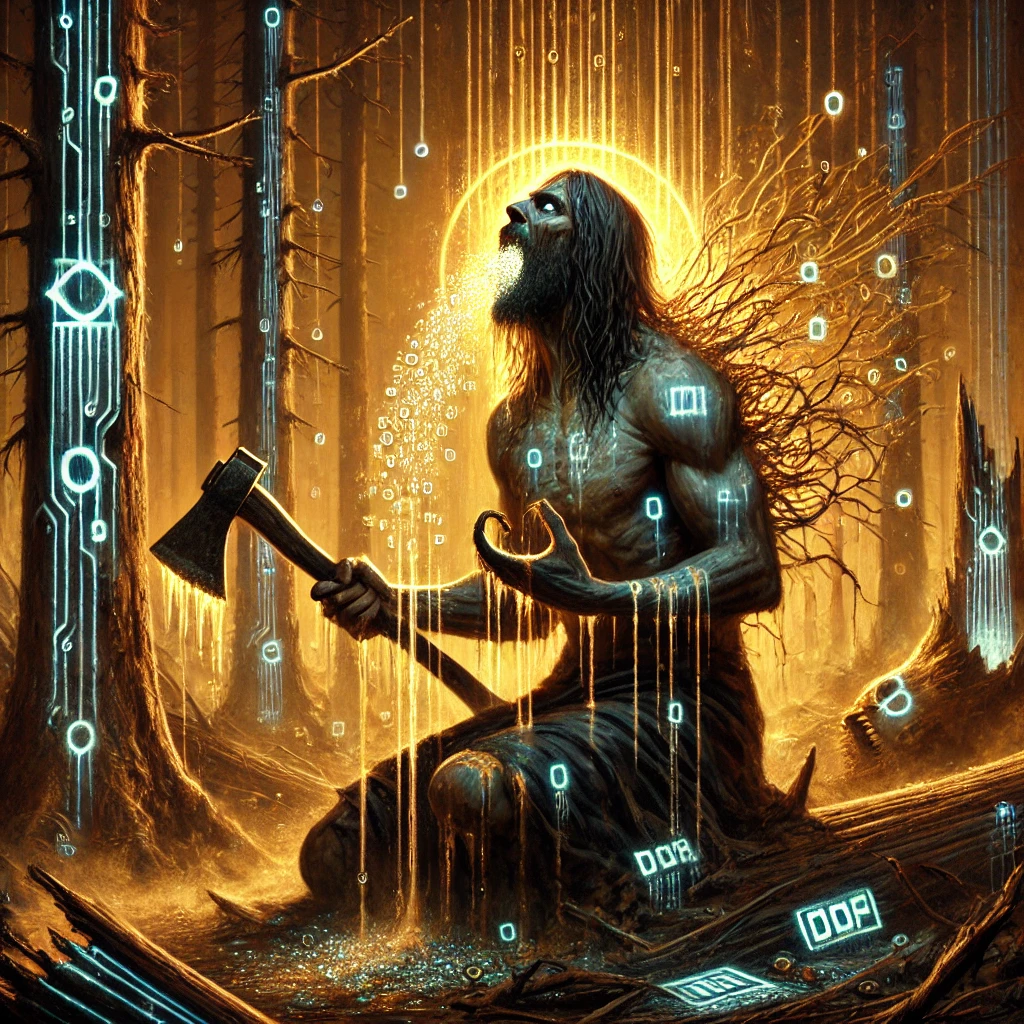Erysichthon and Big Data: The Danger of an Insatiable Appetite for Information
The Power (and Pitfalls) of Myths
Myths exist for a reason. Like fairy tales, they help us make sense of the world—especially when science hasn’t caught up to explain things. Even as myths fade, they often leave behind a shred of truth that continues to shape our thinking.
Sometimes myths become reality—and sometimes, reality becomes myth.
Big Data: From Promise to Disillusionment
Take Big Data—once hailed as a game-changing revolution that would reshape business, marketing, and decision-making. In its early days, Big Data was treated almost like a magical force—one that could predict, optimize, and streamline everything with machine-like precision.
But now? A chill is in the air.
Many of the lofty promises of Big Data are being re-examined—and debunked. AI has entered big data in a “big way” – no pun intended.
What was once a slow, human-driven process of sifting through endless data points has now become an intelligent, self-learning system that not only analyzes patterns—but anticipates them. AI doesn’t just process data; it reshapes how we interpret it, stripping away noise, identifying hidden insights, and making real-time adjustments that were once unimaginable. Some examples:
- AI-driven Big Data is revolutionizing medicine by analyzing vast patient records, genetic data, and real-time health monitoring.
- Banks and financial institutions use AI-powered Big Data to catch fraud before it happens.
- Big Data has taken marketing and e-commerce to a whole new level with AI’s ability to predict exactly what consumers want.
But with this power comes a paradox: Are we controlling AI-driven Big Data, or is it controlling us? The race is no longer just about collecting more data—it’s about understanding how much of that intelligence we can truly trust.
Big Data was never meant to be the man behind the curtain, pulling all the strings. But for years, the myth persisted.
And now? We’re probably facing the consequences of believing in it too much.
The Greek Myth That Explains Big Data’s Dilemma
To truly understand the danger of endless data consumption, let’s turn to an ancient Greek myth—one that eerily mirrors our relationship with information today: The Curse of Erysichthon
Erysichthon, a king of Thessaly, loved food. But his hunger wasn’t just normal appetite—it was gluttony.
When he decided to build a grand feasting hall, he needed wood—lots of it. He found the perfect grove of trees, but there was a problem: the grove belonged to Demeter, the goddess of the harvest.
Erysichthon didn’t care. He started chopping.
Then, he struck a tree that bled. A warning. A sign. He ignored it.
Demeter cursed him with an insatiable hunger—one that could never be satisfied. The more he ate, the hungrier he became. He devoured everything in sight, burned through his fortune, and eventually, in his desperation… began eating himself.
Big Data’s Insatiable Appetite
Like Erysichthon, we keep consuming data, convinced it will satisfy our hunger for knowledge. But the more we collect, the more we feel we need.
Businesses hoard terabytes of information—customer behaviors, buying patterns, ad interactions—believing more data equals better insights.
But when do we stop?
- What happens when more data leads to analysis paralysis instead of better decisions?
- What if our need for information blinds us to what’s actually valuable?
- What if, like Erysichthon, we consume ourselves in the process?
How Much Data Do You Really Need?
Nate Silver, in The Signal and The Noise, suggests collecting as much data as possible—but warns that the key to success is being as rigorous and disciplined as possible when analyzing it.
But how much is enough?
Research suggests that when conducting qualitative studies, n=30 is often the magic number—beyond that, you reach diminishing returns.
So why do we still chase more, more, more?
Because we believe the myth—that if we just collect a little more, we’ll finally unlock the answers we need.
Avoiding the Curse of Erysichthon
If you’re drowning in data, it’s time to ask:
- Are you collecting information for insight, or just out of habit?
- Are you making decisions based on data, or just gathering it endlessly?
- Are you truly feeding your business—or are you on the verge of consuming yourself?
Erysichthon ignored the warning signs—and it destroyed him.
If we don’t want Big Data to devour us, we need to know when to stop.
Final Thoughts as you Eat
Even today, myths emerge despite science.
I once told a half-joking story at a meeting—about a blind craftsman who miraculously built production molds of sinks without drawings. It was just a passing remark.
Years later? I heard the same story in another meeting at that company repeated back to me as fact.
That’s how myths work.
Big Data started as a myth with a shred of truth—but if we don’t challenge it, we risk making the myth our reality.
So, how much data can you eat?
More importantly… how much do you really need?
